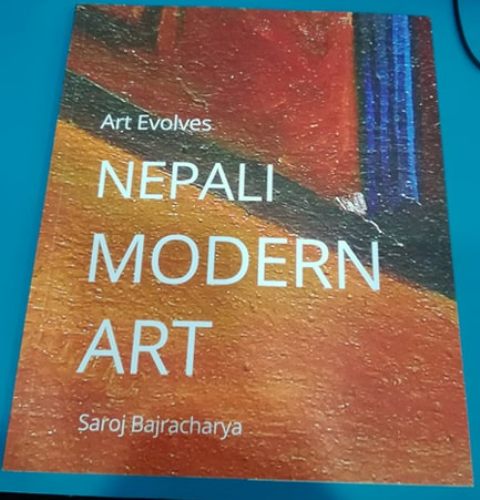Editor of Kaladristi, Devendra Thumkeli and President of Society of Fine Arts Journalist, Keshab Raj Khanal. Here is how you can begin to understand all that the artistic world has to offer.
Don't be intimidated
The main thing to do when visiting an art gallery is to enter it with an open mind. All galleries around the valley are keen to promote homegrown talents as well as spread the love for art itself so they will always welcome you. No one will ever stop you from wandering around and looking at the art. You are not expected to be well versed on art history and forms or understand everything either. With each visit you are bound to become more familiar with this world. But first, you have to step in with an open mind.
Have opinions
The whole point of appreciating art is to explain why we like or dislike something. The fun lies in analyzing your own taste. Simply stating that you like a painting might not be sufficient. You need to give reasons behind your opinions. For example: Do you like the picture because of its colors? Or is it the subject matter that you appreciate the most? Further, are there any downsides to the painting? Unleash that critic in you. Having a point of view is important, though remember, you must be able to give reasons for your opinions as well.
Get your information
With context and background is how we begin to understand and therefore appreciate a work of art. It always helps to know what was or might have been in the mind of the artist at the time he created the work in question. General information such as – When was the painting created? What type of artwork is it? What is the artist's background? – can really help enhance our understanding of the work. Knowing where and under what circumstances a painting is created also often improves our appreciation for it. Often we don't even have to do much detective work, galleries frequently offer free handout materials with lots of great information about the artists and the exhibit in question.
Evaluate the work
Though art appreciation is highly subjective, it does require some objective information as well. So once we have researched the context of the painting, we can begin to appreciate the work itself. Now assessment of the technique i.e. how the actual painting has been done is perhaps the most difficult aspect of art evaluation. However, your skills to do this shall improve by obtaining more knowledge of art and with experience over the years. We can always begin by following some simple steps:
• Gauging the 'composition' of the painting meaning its overall design.
• Noticing the lines. Many believe the skill of a painter is often revealed in the strength and confidence of his outline, creating and tracing the various shapes in his picture.
• Decoding the color schemes. They naturally play a huge part in how we appreciate art. They are the major influence in paintings often dictating our emotions towards it.
• Observing the proportions, the shapes or repeated patterns. These are often based on certain rules and bring optical harmony to the piece.
• Enjoying the textures. Art books are incapable of replicating texture to any extent so when it comes to appreciating brushwork in painting, there is no substitute for visiting a gallery.
And to conclude
Aesthetics is an intensely personal subject. We all have different perspectives especially when it comes to matter of beauty. The same applies to art as well. After discovering the context of the painting, and trying to understand the work itself, at the end of the day, each person can draw up their own conclusions. What truly matters is how it has left you feeling or what it has made you think of. Take a moment and consider the visual and cerebral impact it has had on you and analyze your own reaction to it. Simply put, take a moment and enjoy art.
‘Art Evolves: Nepali Modern Art’: Review



































